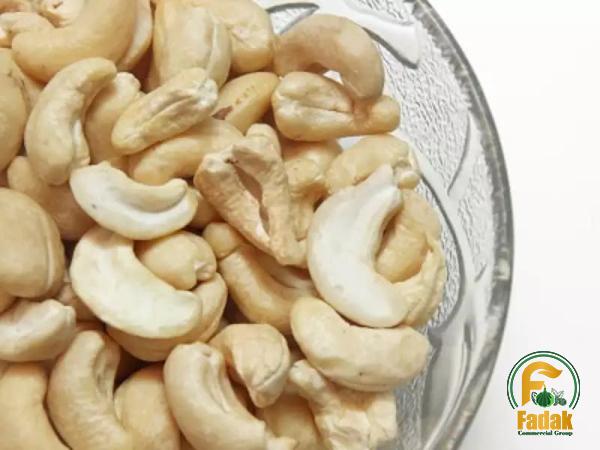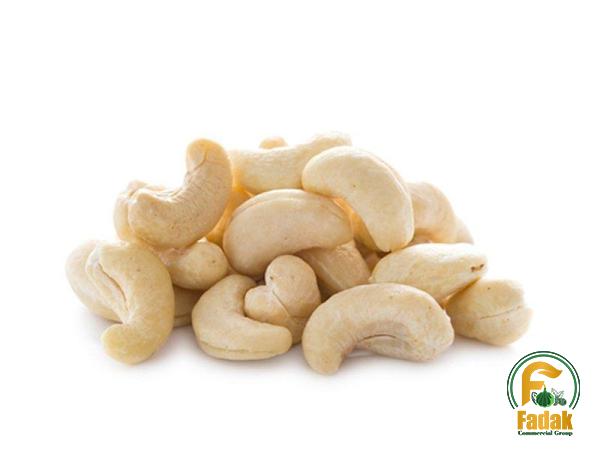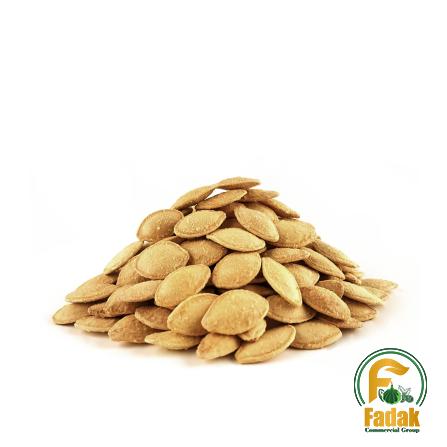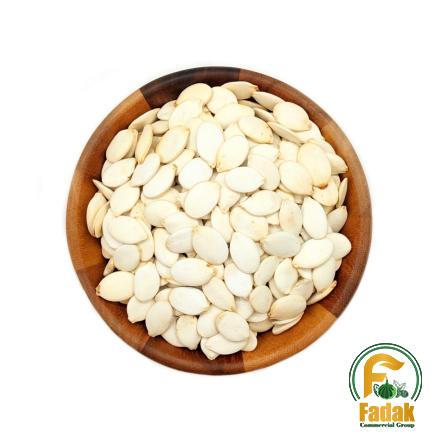The cashew industry has witnessed significant growth over the past decade, driven by increasing global demand for nutritious and healthy snacks, as well as the versatile applications of cashews in various industries. This article aims to provide a comprehensive summary of the global cashew market size, highlighting key factors contributing to its growth, geographic market trends, and future projections. 1. Current Global Cashew Market Size and Value: According to market research reports, the global cashew market was valued at approximately $xxx billion in 2020. This value is expected to rise at a compound annual growth rate (CAGR) of x% from 2021 to 2026, reaching a projected market size of $xxx billion by the end of the forecast period. 2. Key Drivers of Cashew Market Growth: Several factors have significantly contributed to the expansion of the global cashew market. These include: a) Rising Health Consciousness and Nutritional Benefits: Cashews are rich in vitamins, minerals, and healthy fats, making them a popular choice among health-conscious consumers. Cashews offer various health benefits, including improved heart health, weight management, and enhanced immunity. The growing awareness regarding the nutritional benefits of cashews has fueled their demand. b) Increasing Demand for Vegan and Plant-Based Protein Sources: The shift towards plant-based diets and the rising demand for vegan protein sources have boosted the consumption of cashews. Cashews are a good source of plant-based protein and are being incorporated into various vegan products such as snacks, milks, and butters. c) Expanding Applications and Product Innovations: Cashews are not just consumed as a snack but also find application in the food processing, bakery, confectionery, and dairy industries. They are used as ingredients in chocolates, ice creams, desserts, and bakery products due to their rich taste and texture. The versatility of cashews in different culinary applications has led to increased demand and expanded market opportunities. d) Growing Disposable Income in Emerging Markets: Rapid economic growth, urbanization, and rising disposable income in emerging markets such as India, China, and Brazil have played a vital role in increasing the demand for cashews. These countries have witnessed a rise in middle-class consumers who are willing to spend on premium food products, including cashews.

nut
 3. Regional Analysis of the Global Cashew Market: The global cashew market can be segmented into various regions, each contributing to the overall market size: a) Asia Pacific: The Asia Pacific region dominates the global cashew market, accounting for the largest market share. This can be attributed to the widespread popularity and consumption of cashews in countries such as India, Vietnam, and China. These countries are also major producers of cashews, further supporting the market growth. b) North America: North America represents a considerable market for cashews due to increasing consumer demand for healthy snacks and plant-based protein sources. c) Europe: Europe is another significant region in the cashew market, driven by growing consumer awareness of the health benefits of cashews and their increased usage in the food processing industry. d) Rest of the World: The Middle East, Africa, and Latin America are emerging markets for cashews, witnessing substantial growth in recent years. The rising disposable income, changing food preferences, and increasing popularity of snacking culture have contributed to the market expansion in these regions. 4. Future Projections and Opportunities: The global cashew market is expected to witness sustained growth in the coming years. Some of the key opportunities and projections for the market include: a) Innovative Product Developments: Continuous product innovations and diversification will help manufacturers tap into new consumer segments and expand their market presence. The development of value-added products such as flavored cashews, cashew-based spreads, and cashew-based beverages has the potential to drive market growth. b) Sustainable and Organic Products: The market is witnessing a rising demand for sustainably sourced and organic cashews. Consumers are increasingly opting for products that are environmentally friendly, ethically sourced, and free from harmful chemicals. Manufacturers focusing on sustainable practices and certifications are likely to gain a competitive edge. c) Online Retailing and E-commerce: The growth of the e-commerce sector offers a significant avenue for cashew market players to reach a wider audience. Online retailing provides convenience and accessibility, allowing consumers from different geographic regions to directly purchase cashew products, boosting market growth potential. d) Growing Demand in the Snack Food Industry: The snack food industry is consistently evolving, with cashews being a popular ingredient due to their nutritional value and flavor. The increasing demand for healthy and convenient snacking options is expected to fuel the growth of the cashew market. Conclusion: The global cashew market continues to experience substantial growth, driven by factors such as health consciousness, the popularity of plant-based diets, and expanding applications across industries. With increased disposable income, changing consumer preferences, and market opportunities in emerging regions, the market is projected to witness consistent growth in the foreseeable future. Manufacturers can capitalize on this growing demand by focusing on product innovation, sustainability, and leveraging online retailing platforms to reach a wider consumer base.
3. Regional Analysis of the Global Cashew Market: The global cashew market can be segmented into various regions, each contributing to the overall market size: a) Asia Pacific: The Asia Pacific region dominates the global cashew market, accounting for the largest market share. This can be attributed to the widespread popularity and consumption of cashews in countries such as India, Vietnam, and China. These countries are also major producers of cashews, further supporting the market growth. b) North America: North America represents a considerable market for cashews due to increasing consumer demand for healthy snacks and plant-based protein sources. c) Europe: Europe is another significant region in the cashew market, driven by growing consumer awareness of the health benefits of cashews and their increased usage in the food processing industry. d) Rest of the World: The Middle East, Africa, and Latin America are emerging markets for cashews, witnessing substantial growth in recent years. The rising disposable income, changing food preferences, and increasing popularity of snacking culture have contributed to the market expansion in these regions. 4. Future Projections and Opportunities: The global cashew market is expected to witness sustained growth in the coming years. Some of the key opportunities and projections for the market include: a) Innovative Product Developments: Continuous product innovations and diversification will help manufacturers tap into new consumer segments and expand their market presence. The development of value-added products such as flavored cashews, cashew-based spreads, and cashew-based beverages has the potential to drive market growth. b) Sustainable and Organic Products: The market is witnessing a rising demand for sustainably sourced and organic cashews. Consumers are increasingly opting for products that are environmentally friendly, ethically sourced, and free from harmful chemicals. Manufacturers focusing on sustainable practices and certifications are likely to gain a competitive edge. c) Online Retailing and E-commerce: The growth of the e-commerce sector offers a significant avenue for cashew market players to reach a wider audience. Online retailing provides convenience and accessibility, allowing consumers from different geographic regions to directly purchase cashew products, boosting market growth potential. d) Growing Demand in the Snack Food Industry: The snack food industry is consistently evolving, with cashews being a popular ingredient due to their nutritional value and flavor. The increasing demand for healthy and convenient snacking options is expected to fuel the growth of the cashew market. Conclusion: The global cashew market continues to experience substantial growth, driven by factors such as health consciousness, the popularity of plant-based diets, and expanding applications across industries. With increased disposable income, changing consumer preferences, and market opportunities in emerging regions, the market is projected to witness consistent growth in the foreseeable future. Manufacturers can capitalize on this growing demand by focusing on product innovation, sustainability, and leveraging online retailing platforms to reach a wider consumer base.
Specifications of nut
 I. Market Analysis and Trends 1.1. Increasing Global Consumption of Cashews The global consumption of cashews has been on the rise, driven by various factors such as changing diets, urbanization, and increasing disposable income. Consumers are increasingly seeking healthier snacking options, and cashews provide a nutritious solution. Moreover, the growing trend of plant-based diets has further fueled the demand for cashews, as they serve as an excellent source of vegan protein. 1.2. Shift towards Sustainable and Organic Cashews There has been a growing emphasis on sustainability and organic products in recent years. Consumers are becoming more conscious of the environmental impact of their food choices, and this has led to an increased demand for sustainably sourced and organic cashews. Manufacturers are responding to this trend by implementing sustainable farming practices and obtaining eco-friendly certifications, which not only attracts environmentally conscious consumers but also sets them apart from competitors. 1.3. Growing Application in the Food Industry Cashews are versatile and find applications in various food and beverage sectors. They are commonly used in the confectionery industry, where they are added to chocolates, candies, and nougats for their unique flavor and texture. Additionally, cashews are utilized in the bakery industry to enhance the taste and nutritional profile of baked goods such as bread, cookies, and pastries. The dairy industry also incorporates cashews in the production of dairy alternatives such as cashew milk and cashew-based yogurts. This broad range of applications in the food industry presents numerous growth opportunities for cashew manufacturers. II. Regional Insights 2.1. Asia Pacific: Dominating the Market The Asia Pacific region holds the largest share of the global cashew market, both in terms of production and consumption. Countries such as India, Vietnam, and Indonesia are major cashew producers, with India being the largest. The region’s dominance can be attributed to the long-standing cultural affinity for cashews as a snack, as well as the presence of large-scale cashew processing industries. Moreover, the popularity of cashews as an ingredient in traditional cuisines and sweets further bolsters the demand in this region. 2.2. North America: Rising Health Consciousness North America has witnessed significant growth in the cashew market, primarily driven by the increasing consumer awareness of health benefits associated with consuming cashews. The region’s growing focus on healthy snacking options, particularly among millennials and health-conscious individuals, has created a favorable market environment for cashew products. Furthermore, the rising popularity of plant-based diets and the demand for vegan protein sources have propelled the consumption of cashews in North America. 2.3. Europe: Exploring New Applications Europe has emerged as another significant market for cashews, with consumers increasingly recognizing the nutritional value and taste of cashews. The region witnesses a high consumption of cashews as a snack, but there is also a growing demand for cashews in the food processing industry. Manufacturers in Europe are exploring new applications for cashews, such as incorporating them into spreads, dips, and savory products, which further expands the market potential.
I. Market Analysis and Trends 1.1. Increasing Global Consumption of Cashews The global consumption of cashews has been on the rise, driven by various factors such as changing diets, urbanization, and increasing disposable income. Consumers are increasingly seeking healthier snacking options, and cashews provide a nutritious solution. Moreover, the growing trend of plant-based diets has further fueled the demand for cashews, as they serve as an excellent source of vegan protein. 1.2. Shift towards Sustainable and Organic Cashews There has been a growing emphasis on sustainability and organic products in recent years. Consumers are becoming more conscious of the environmental impact of their food choices, and this has led to an increased demand for sustainably sourced and organic cashews. Manufacturers are responding to this trend by implementing sustainable farming practices and obtaining eco-friendly certifications, which not only attracts environmentally conscious consumers but also sets them apart from competitors. 1.3. Growing Application in the Food Industry Cashews are versatile and find applications in various food and beverage sectors. They are commonly used in the confectionery industry, where they are added to chocolates, candies, and nougats for their unique flavor and texture. Additionally, cashews are utilized in the bakery industry to enhance the taste and nutritional profile of baked goods such as bread, cookies, and pastries. The dairy industry also incorporates cashews in the production of dairy alternatives such as cashew milk and cashew-based yogurts. This broad range of applications in the food industry presents numerous growth opportunities for cashew manufacturers. II. Regional Insights 2.1. Asia Pacific: Dominating the Market The Asia Pacific region holds the largest share of the global cashew market, both in terms of production and consumption. Countries such as India, Vietnam, and Indonesia are major cashew producers, with India being the largest. The region’s dominance can be attributed to the long-standing cultural affinity for cashews as a snack, as well as the presence of large-scale cashew processing industries. Moreover, the popularity of cashews as an ingredient in traditional cuisines and sweets further bolsters the demand in this region. 2.2. North America: Rising Health Consciousness North America has witnessed significant growth in the cashew market, primarily driven by the increasing consumer awareness of health benefits associated with consuming cashews. The region’s growing focus on healthy snacking options, particularly among millennials and health-conscious individuals, has created a favorable market environment for cashew products. Furthermore, the rising popularity of plant-based diets and the demand for vegan protein sources have propelled the consumption of cashews in North America. 2.3. Europe: Exploring New Applications Europe has emerged as another significant market for cashews, with consumers increasingly recognizing the nutritional value and taste of cashews. The region witnesses a high consumption of cashews as a snack, but there is also a growing demand for cashews in the food processing industry. Manufacturers in Europe are exploring new applications for cashews, such as incorporating them into spreads, dips, and savory products, which further expands the market potential.
buy nut
 2.4. Rest of the World: Untapped Opportunities The Middle East, Africa, and Latin America represent emerging markets with considerable growth potential for the cashew industry. The rising population and improving economic conditions in these regions have led to an increase in disposable income and changing food preferences. Cashews, which were traditionally consumed in limited quantities, have gained popularity due to their rich flavor and nutritional benefits. Cashew imports and consumption are consistently growing in these regions, presenting lucrative opportunities for global cashew producers and exporters. III. Competitive Landscape 3.1. Key Players in the Global Cashew Market The global cashew market is characterized by the presence of both multinational corporations and regional players. Some of the key players in the market include Olam International, Cashew Company, and CBL Natural Foods. These companies dominate the industry due to their extensive distribution networks, strong marketing strategies, and high-quality products. In addition to these established players, there are also several small-scale processors and exporters in countries like Vietnam, India, and Brazil. 3.2. Market Expansion and Product Development To maintain a competitive edge and cater to evolving consumer demands, cashew manufacturers are focusing on product diversification and expansion strategies. Companies are investing in research and development to develop innovative cashew-based products beyond traditional snacks. This includes flavored cashews, cashew-based energy bars, granola mixtures, and ready-to-eat cashew meals. Manufacturers are also exploring strategic partnerships and acquisitions to gain access to new markets and expand their customer base. IV. Challenges and Opportunities 4.1. Supply Chain Constraints The cashew industry faces challenges related to supply chain management, including the volatility of raw cashew nut prices, unreliable transportation infrastructure, and difficulties in sourcing high-quality raw materials. Additionally, there is a significant skill gap in cashew processing and limited access to efficient technology in some regions. These challenges need to be addressed by investing in training programs and enhancing infrastructure to ensure a smooth supply chain. 4.2. Emerging Markets Despite the challenges, emerging markets present significant growth opportunities for the cashew industry. The rising disposable income, growing middle-class population, and increasing urbanization in these regions are driving the demand for cashew products. Manufacturers should focus on understanding the local preferences and cultural nuances in these markets to effectively cater to the needs of consumers. Conclusion The global cashew market is witnessing substantial growth, driven by factors such as increasing global consumption, the shift towards sustainable and organic products, and the growing application of cashews in various food and beverage sectors. Regional variations in market dynamics and consumer preferences present both challenges and opportunities for industry players. To capitalize on the projected market growth, manufacturers need to embrace product diversification, invest in sustainable practices, address supply chain challenges, and focus on emerging markets. By fulfilling the evolving needs of consumers and adopting strategic approaches, companies can position themselves favorably in the competitive global cashew market.
2.4. Rest of the World: Untapped Opportunities The Middle East, Africa, and Latin America represent emerging markets with considerable growth potential for the cashew industry. The rising population and improving economic conditions in these regions have led to an increase in disposable income and changing food preferences. Cashews, which were traditionally consumed in limited quantities, have gained popularity due to their rich flavor and nutritional benefits. Cashew imports and consumption are consistently growing in these regions, presenting lucrative opportunities for global cashew producers and exporters. III. Competitive Landscape 3.1. Key Players in the Global Cashew Market The global cashew market is characterized by the presence of both multinational corporations and regional players. Some of the key players in the market include Olam International, Cashew Company, and CBL Natural Foods. These companies dominate the industry due to their extensive distribution networks, strong marketing strategies, and high-quality products. In addition to these established players, there are also several small-scale processors and exporters in countries like Vietnam, India, and Brazil. 3.2. Market Expansion and Product Development To maintain a competitive edge and cater to evolving consumer demands, cashew manufacturers are focusing on product diversification and expansion strategies. Companies are investing in research and development to develop innovative cashew-based products beyond traditional snacks. This includes flavored cashews, cashew-based energy bars, granola mixtures, and ready-to-eat cashew meals. Manufacturers are also exploring strategic partnerships and acquisitions to gain access to new markets and expand their customer base. IV. Challenges and Opportunities 4.1. Supply Chain Constraints The cashew industry faces challenges related to supply chain management, including the volatility of raw cashew nut prices, unreliable transportation infrastructure, and difficulties in sourcing high-quality raw materials. Additionally, there is a significant skill gap in cashew processing and limited access to efficient technology in some regions. These challenges need to be addressed by investing in training programs and enhancing infrastructure to ensure a smooth supply chain. 4.2. Emerging Markets Despite the challenges, emerging markets present significant growth opportunities for the cashew industry. The rising disposable income, growing middle-class population, and increasing urbanization in these regions are driving the demand for cashew products. Manufacturers should focus on understanding the local preferences and cultural nuances in these markets to effectively cater to the needs of consumers. Conclusion The global cashew market is witnessing substantial growth, driven by factors such as increasing global consumption, the shift towards sustainable and organic products, and the growing application of cashews in various food and beverage sectors. Regional variations in market dynamics and consumer preferences present both challenges and opportunities for industry players. To capitalize on the projected market growth, manufacturers need to embrace product diversification, invest in sustainable practices, address supply chain challenges, and focus on emerging markets. By fulfilling the evolving needs of consumers and adopting strategic approaches, companies can position themselves favorably in the competitive global cashew market.










Your comment submitted.